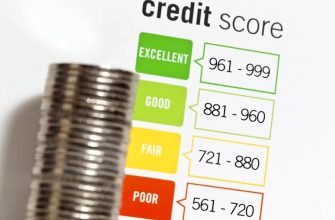Credit history must be accurate, but mistakes are alarmingly common. For consumers, knowledge of the Fair Credit Reporting Act comes in handy. A 609 dispute letter can help you clean the reports, but how does it work?
Around 20% of citizens have inaccurate borrowing history, according to the FTC. The three bureaus — Equifax, Experian, and TransUnion — do their best to accumulate reliable data, but their efforts fall short. The consequences are far-reaching, as the quality of reporting affects evaluations by FICO and VantageScore.
As a result, responsible consumers are treated unfairly. Banks demand high interests or reject their applications. Insurers, landlords, and employers base decisions on the same scores. Clearly, taking action is crucial, but is 609 credit repair the answer? We have looked at the relevant theory and practice. Here is everything you ought to know.
What Is Section 609?
This section of the FCRA statute is often misconstrued. It does not entitle you to question official data. It states one may obtain a copy of their own reports and associated information. There is no mention of rightful disapproval or obligation to investigate such claims. Technically, the “609 dispute letter” is a misnomer.
Yet, the above-mentioned rights are stipulated in section 611. It allows disputing of any items consumers find unverifiable or inaccurate. If the entries may not be validated, they must be wiped off the records. This makes a credit report dispute letter potentially effective.
Here is the premise. The bureau may remove suspicious derogatories if it fails to provide evidence, such as the original contract with your signature. Note that the statute only applies to data stored by the agencies themselves.
Usually, consumers cite section 609 when they believe their scores and the underlying records are unfair. Many people become aware of this when their loan applications are rejected. Poor ratings stem from documenting errors — from incorrect details to false events like bankruptcies or evictions. The records of any agency — TransUnion, Equifax, Experian, or all three — may be erroneous. This justifies section 609 credit repair.
Do 609 Letters Really Work?
This type of formal correspondence differs from a letter to creditors. Here, the recipient is your reporting agency. The method is seen as a loophole, a way to fast-track a score raise. It places responsibility on the organization, questioning its internal policies. Even free 609 dispute letters may be effective if your data is inaccurate. Here is why.
First, there is a technicality to exploit. Lenders may fail to share information with all reporting agencies, despite their legal obligation to do so. This means errors may be limited to one report. Once they vanish, the FICO and VantageScore ratings rise instantly.
Secondly, under section 609, before any items appear on your records, your identity must be verified. Now, suppose you have an old debt tarnishing your score. If the bureaus or collection companies fail to prove that it is yours, it may be deleted. The law — specifically, the FCRA — entitles you to have any false or incorrect items removed, be it a hard inquiry or a bankruptcy.
Today, collecting the reports is easy — just go to www.annualcreditreport.com and download all three. Go through the documents, scrutinizing each line. Are there any discrepancies or false items you could question? If this is the case, a 609 dispute letter could work.
Are There Any Alternatives?
This method is not a universal quick fix. Consumers may achieve better and faster results with professional credit repair services. Industry experts will not only find and prioritize the errors. They will challenge them on your behalf, which saves time. Mistakes are common, and all three documents could be flawed.
Depending on the service package, you may be able to open unlimited disputes simultaneously and track the changes online. For example, Lexington Law has the best app in the industry. If you decide to take the matter into your own hands, here are a few caveats.
What 609 Letters Don’t Do?
You cannot remove accurate borrowing events through any type of credit inquiry. If the bureau does provide the original contract with your signature, the data is correct. It will affect your score until it disappears in due time. Most derogatories like missed payments and collections have a lifespan of seven years. The only exception is a Chapter 7 bankruptcy — it stays on the records for a decade.
So, be reasonable. Do not waste time composing a 609 letter if you know your report is flawless. Abusing the procedure will get you nowhere. Here is a relevant excerpt from the section:
“…a consumer reporting agency is not required to remove accurate derogatory information from the file of a consumer unless the information is outdated […] or cannot be verified.”
If the low score is justified, work on your spending habits. You can gain points by using less of your credit limits and adding data through Experian Boost. Make all payments on time. If you miss one and it is reported, send the lender a properly worded goodwill letter. Note that this does not always work.
If you suspect mistakes, try removing them. While Section 609 does not oblige the agencies to correct their records, this is exactly what many consumers achieve. When bureaus acknowledge that some data is unverifiable, they may remove it. You can find a suitable 609 letter template further below.
How to Write a 609 Letter?

There are a plethora of templates online, but no reason to believe any of them is preferable. You may hear of 11 words that guarantee a positive result. This is false — the wording does not matter as long as you include the right details. The agency should understand your intent and the items you refer to. Here is a very basic example of a dispute letter.
Template 1:
Dear TransUnion,
I am exercising my right under the Fair Credit Reporting Act, Section 609, to receive further information regarding specific items on my credit report.
Account Names and Numbers
I would like to receive the original sources of the information including, but not limited to, the original contract or agreement with my signature. If you are unable to provide this information, please remove the accounts immediately since neither your bureau nor I can verify the accuracy of their reporting.
Yours faithfully,
Sam Smith
Address, Social Security number, Date of Birth
Template 2:
To whom it may concern,
To exercise my right under the Fair Credit Reporting Act: Section 609, I am requesting verification of specific information included in my credit report.
Account Names and Numbers
Please provide the original sources of information used by these creditors. This should include the identity of the individuals who obtained my reports, the original contract or agreement with my signature, and any other associated documentation. If your agency is not able to provide this information, please remove these items immediately, as their accuracy may not be verified.
Yours faithfully,
Sam Smith
Address, Social Security Number, Date of birth
How to Send a 609 Letter?

This is the final part of our credit repair secrets. You should have hard evidence of correspondence, so send your letter by certified mail with a return receipt. This will allow you to track the delivery, so you know when a response should be expected. The bureau will have 30 days to investigate your case (or 45 in some situations). You must contact all bureaus where the suspicious account is listed. Here are the addresses:
- Equifax: P.O. Box 740241 Atlanta, GA 30374-0241
- Experian: P.O. Box 4500 Allen, TX 75013
- TransUnion Consumer Solutions: P.O. Box 2000 Chester, PA 19016-2000
Even if you write to all three companies, the costs are negligible. On average, sending one letter by certified mail should set you back $8 at most. Considering the importance and the potential future savings, this is a minor expense. If you just throw your letter in the mailbox, the addressee may claim to have never received it.
Before heading to the post office, make a copy for your own reference. Keep track of crucial dates like the date of sending and receiving. Any physical documents related to the case must be kept in one place. Computer files should be saved in a designated folder and backed up (on a cloud drive or a memory card).
Conclusion
Under Section 609 of the Fair Credit Reporting Act, every American can obtain information related to any of their official reports. If the bureau fails to provide supporting evidence as part of the credit inquiry, the questionable entries may be deleted. This is a valid way to eliminate errors, but it should not be abused.
If you suspect your data may be wrong, consider our free 609 dispute letter template. Use certified mail with the return receipt requested and wait for the results. These should come in 30-45 days.








